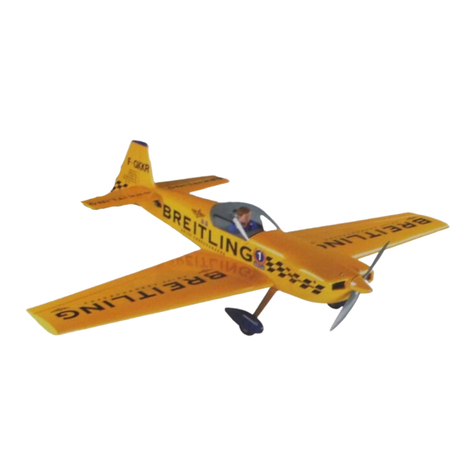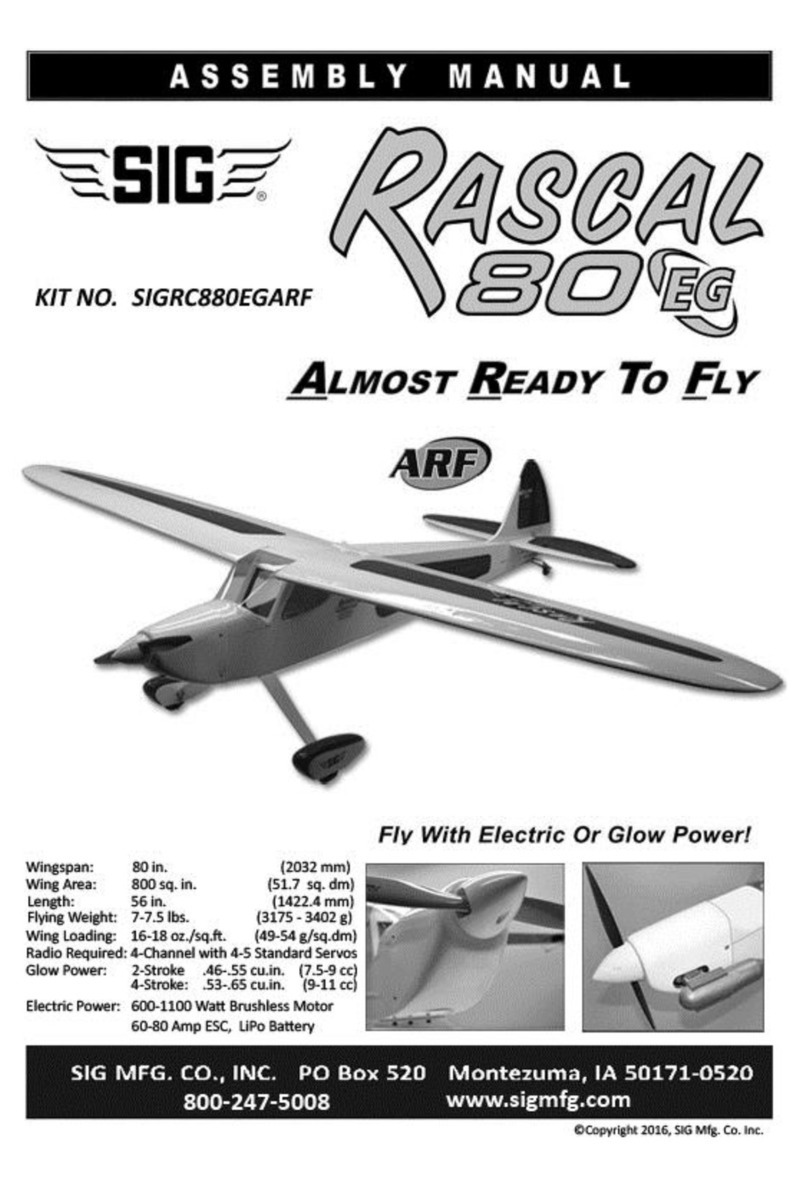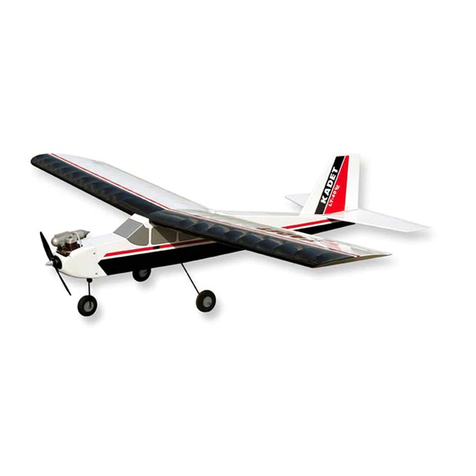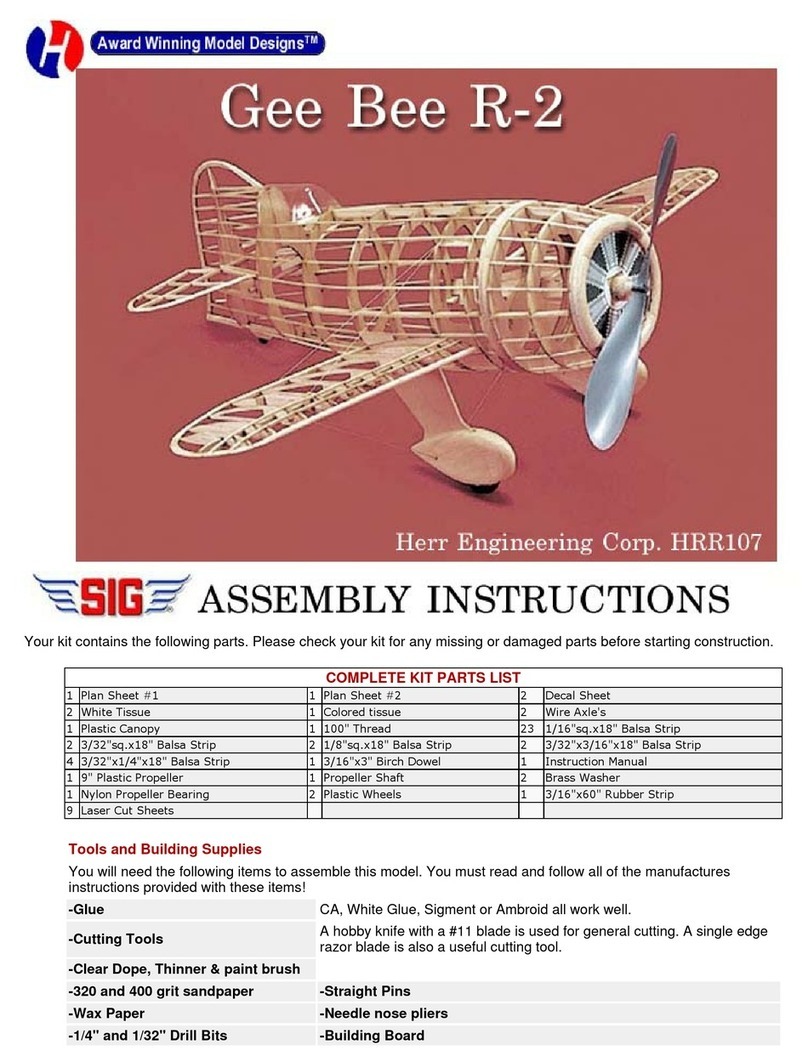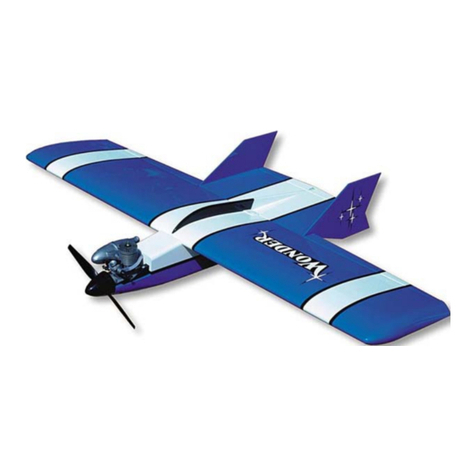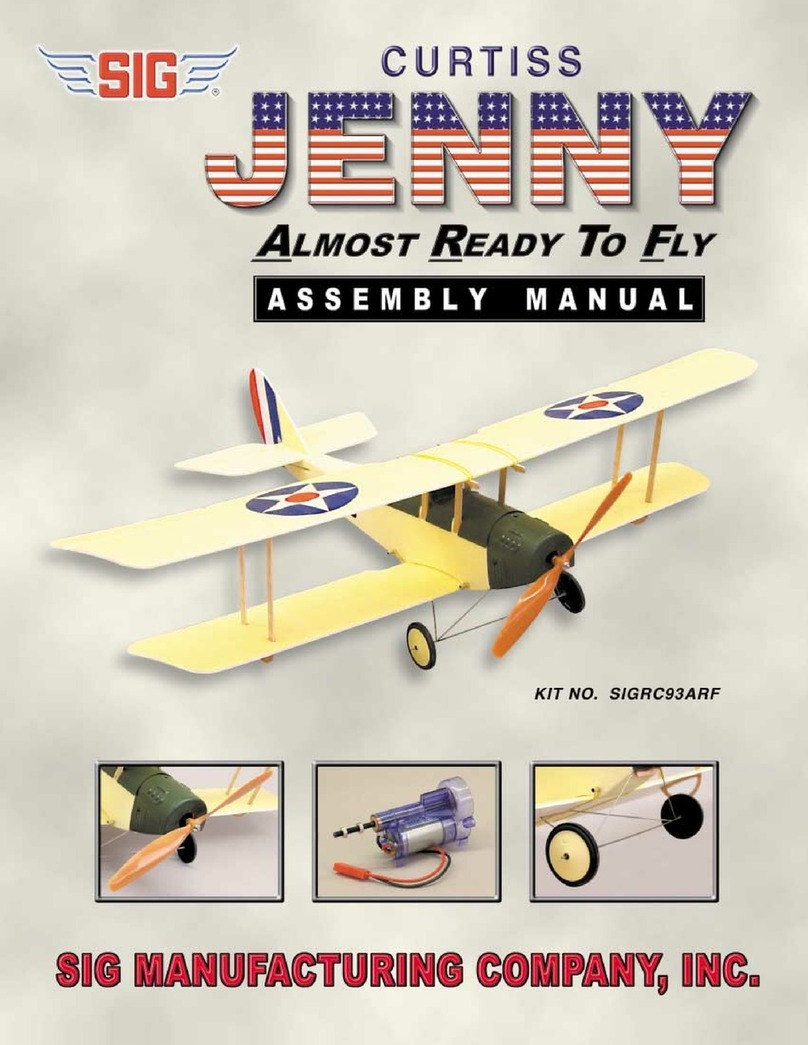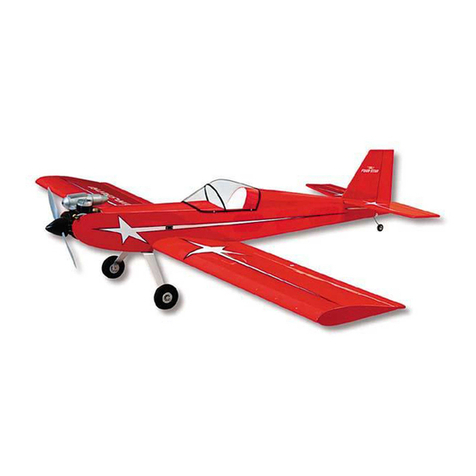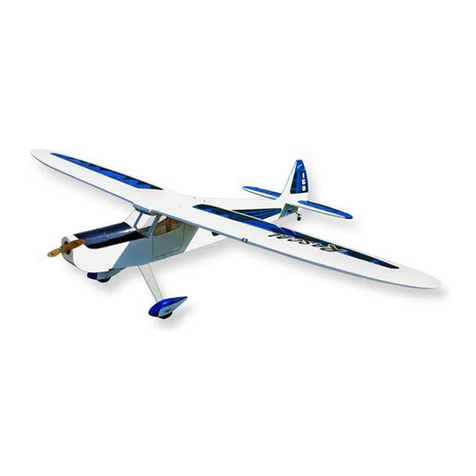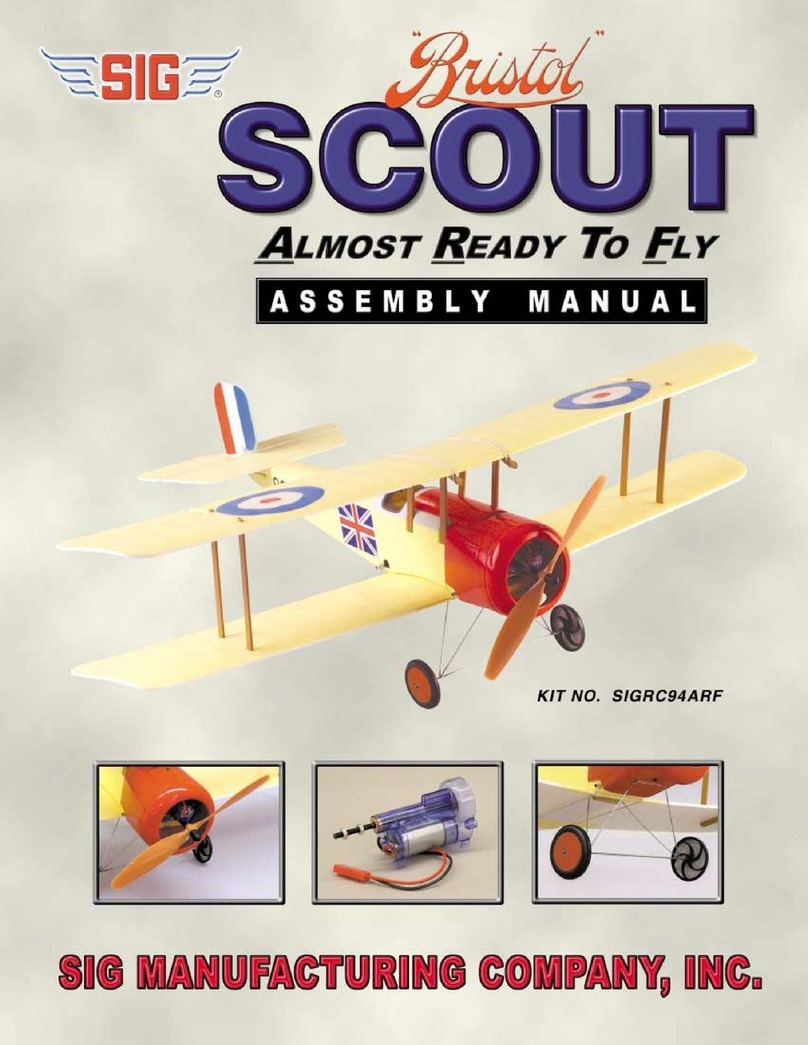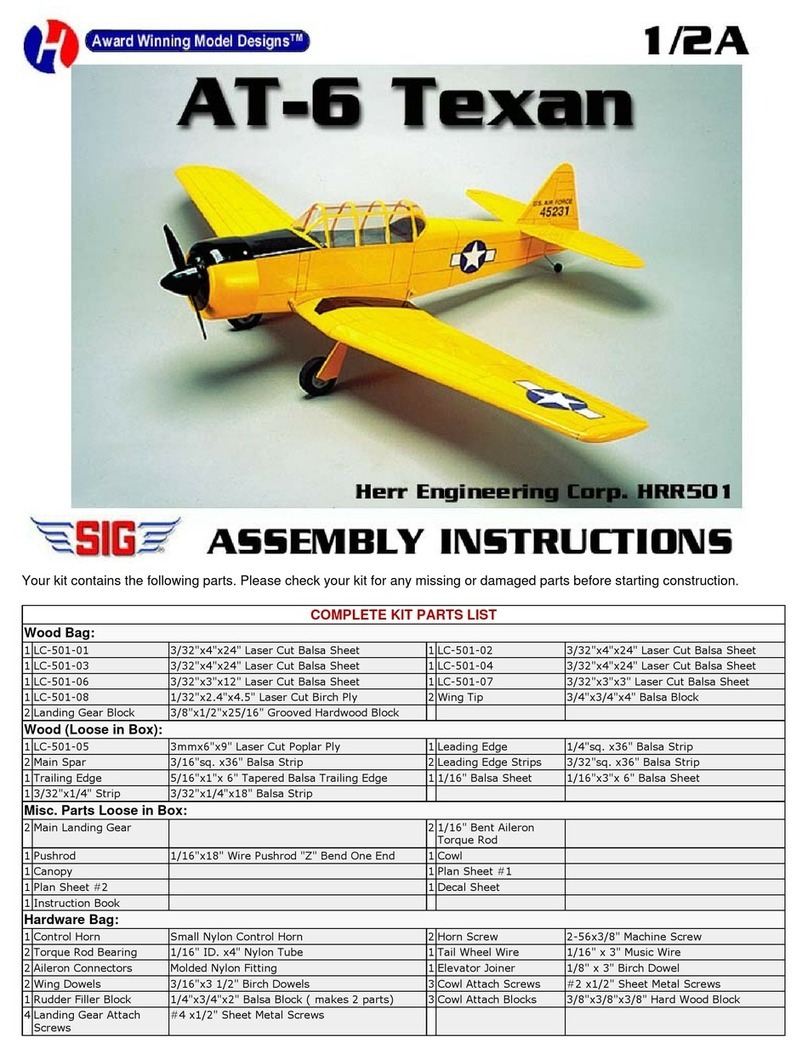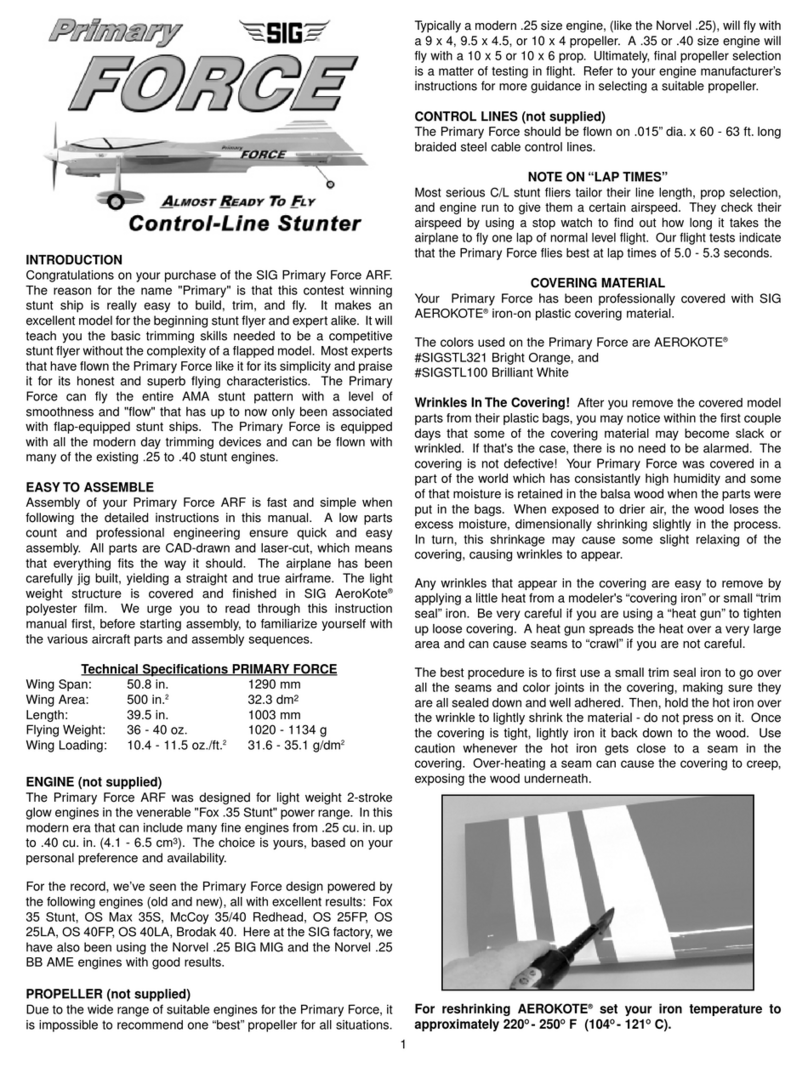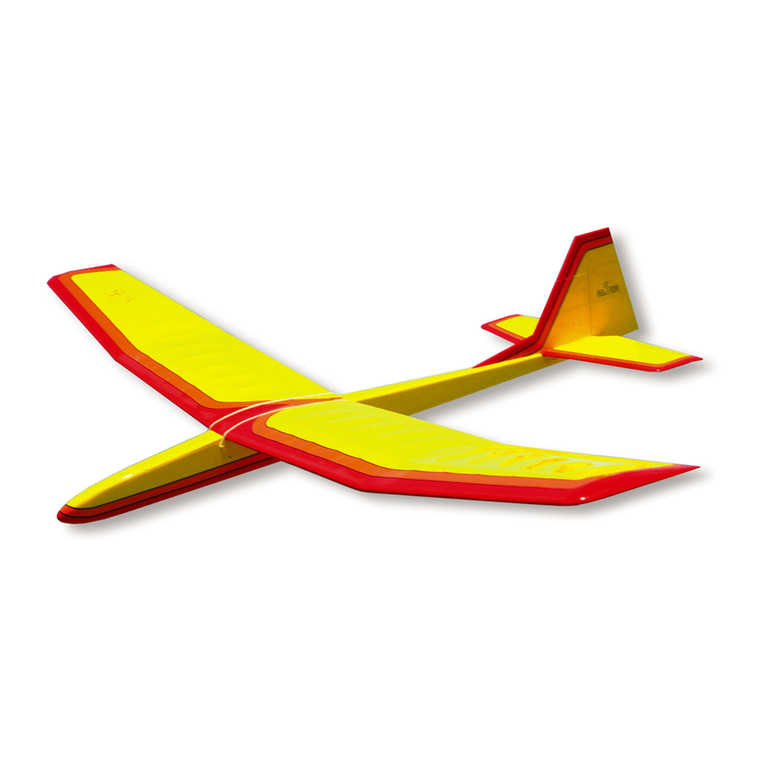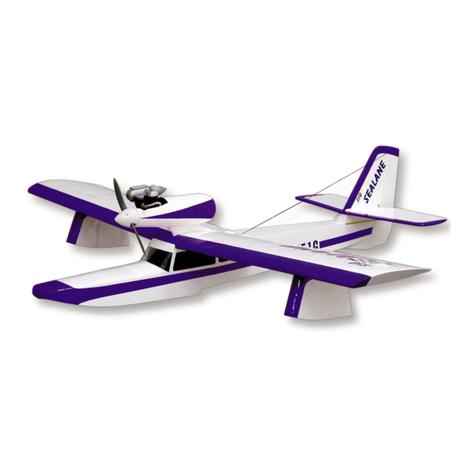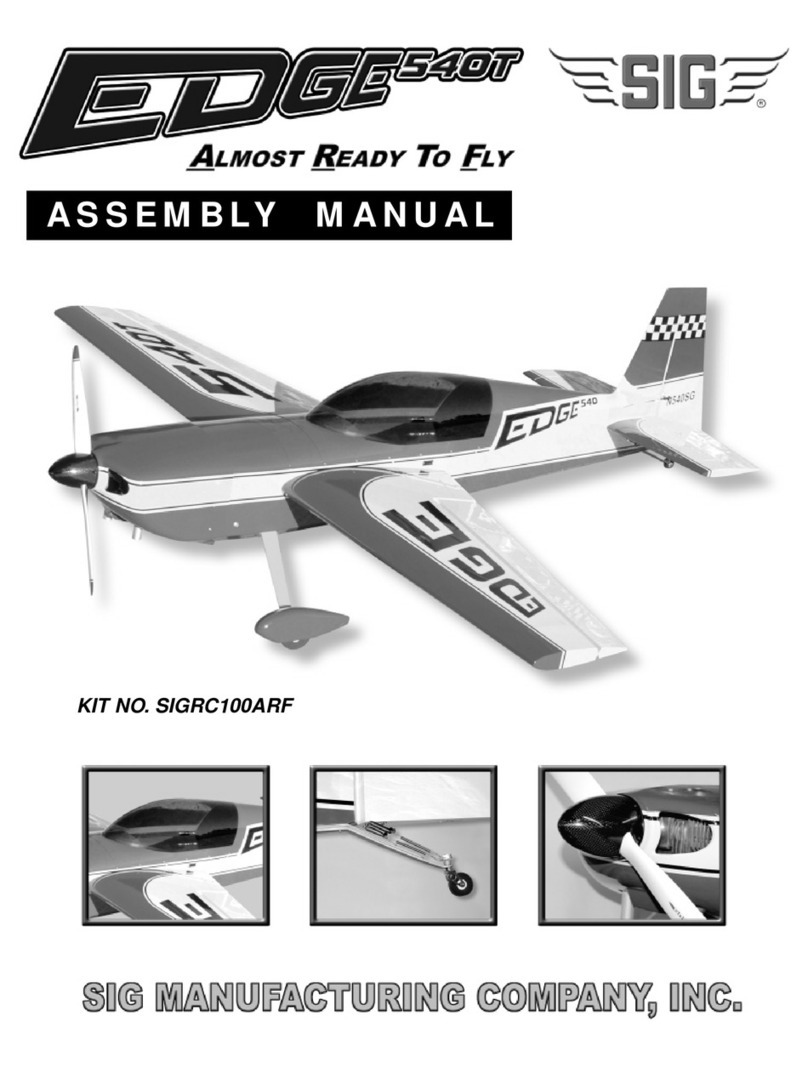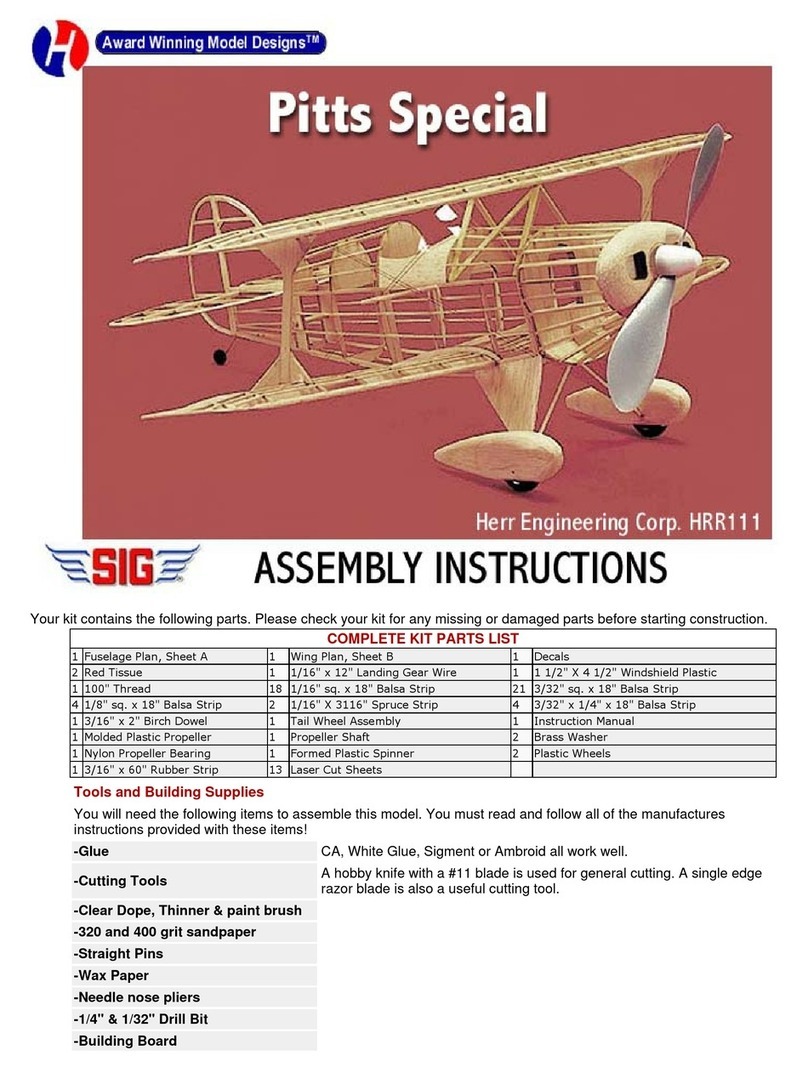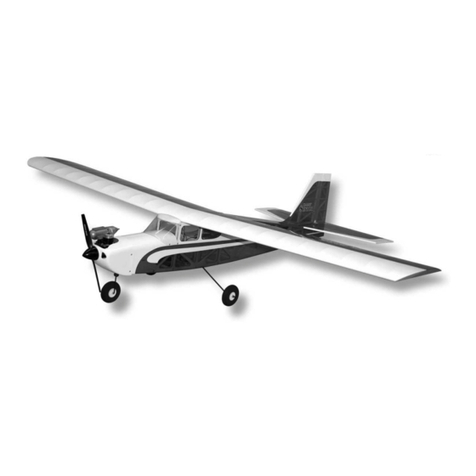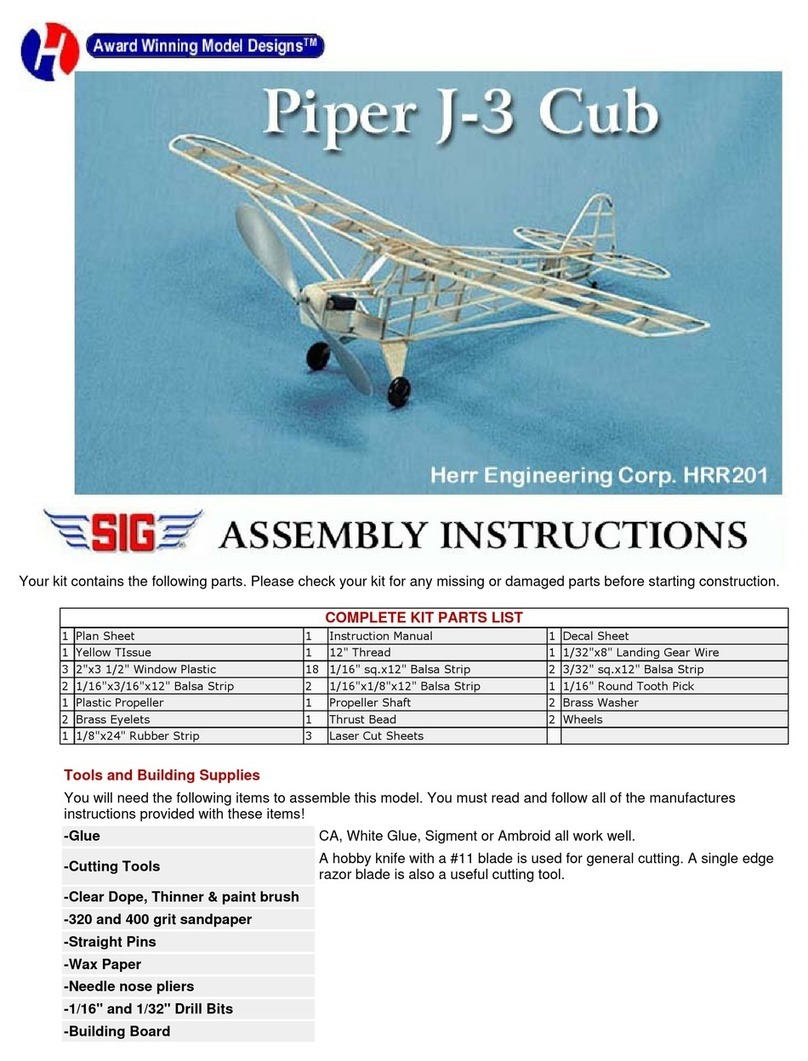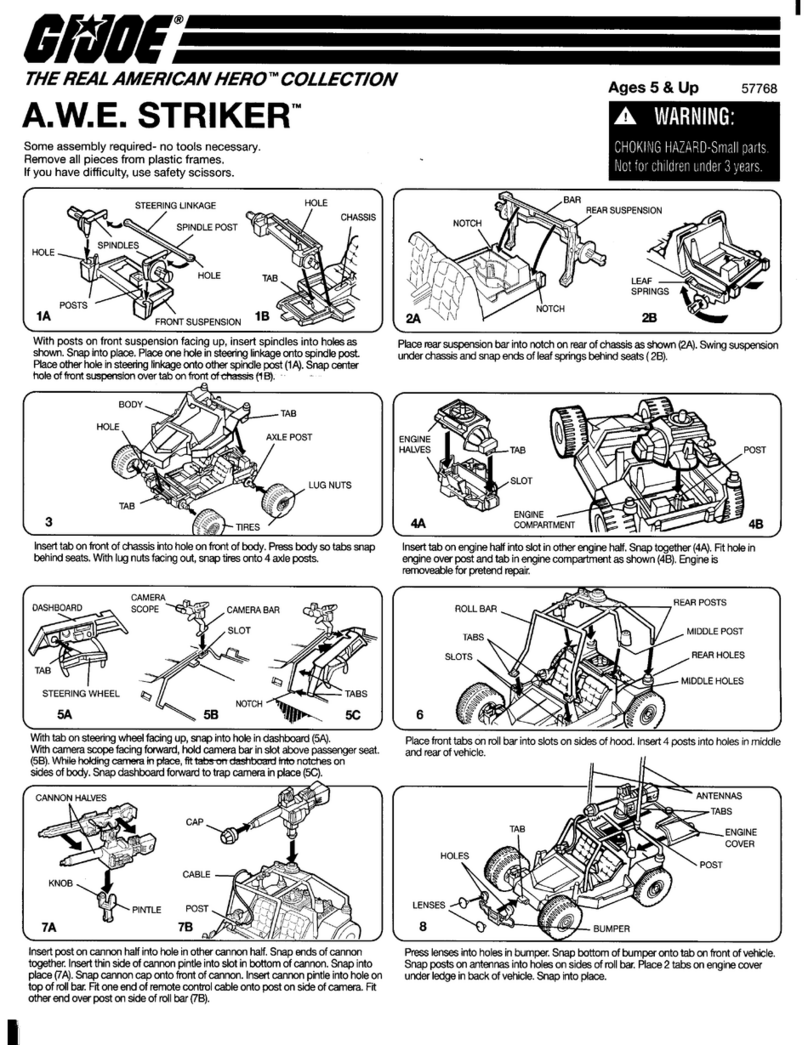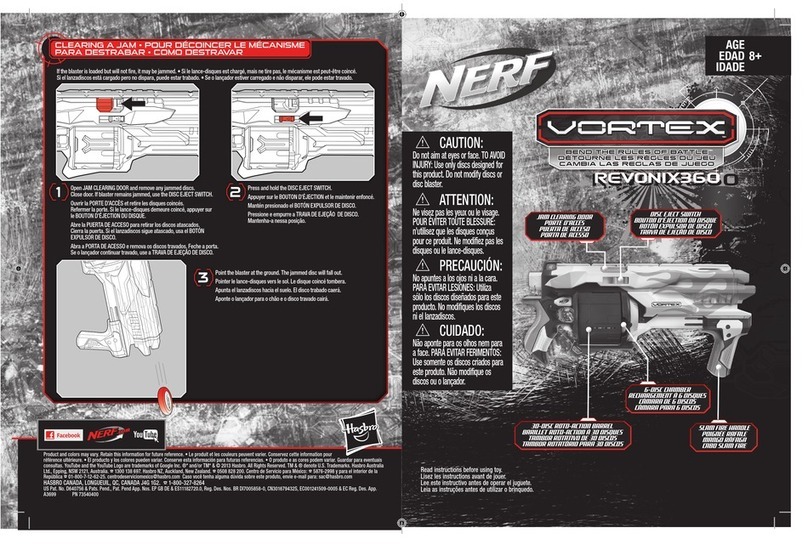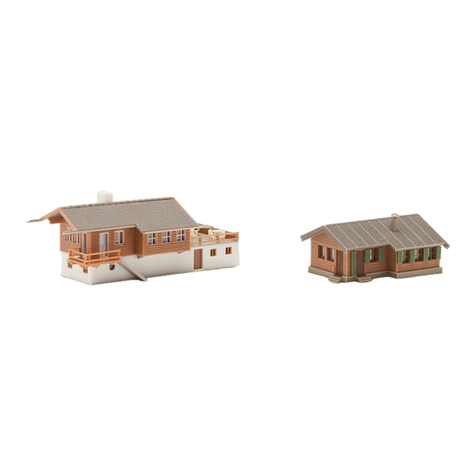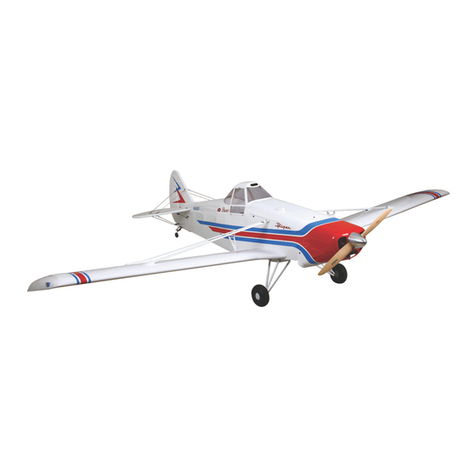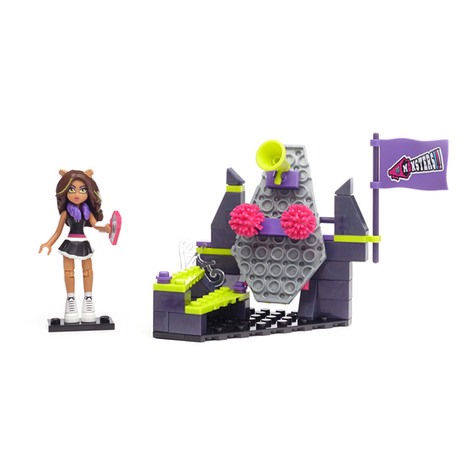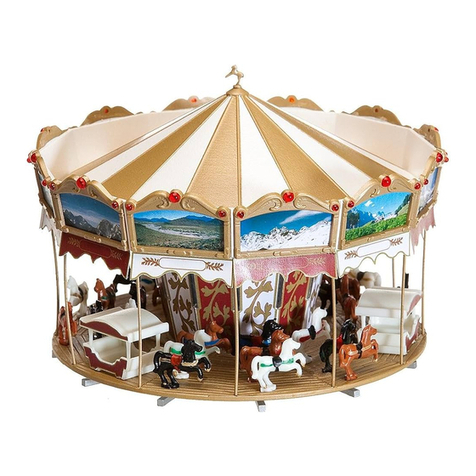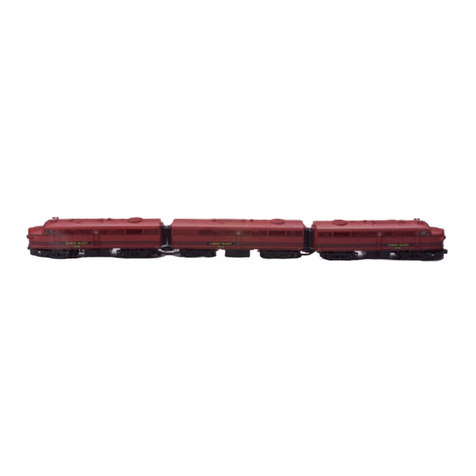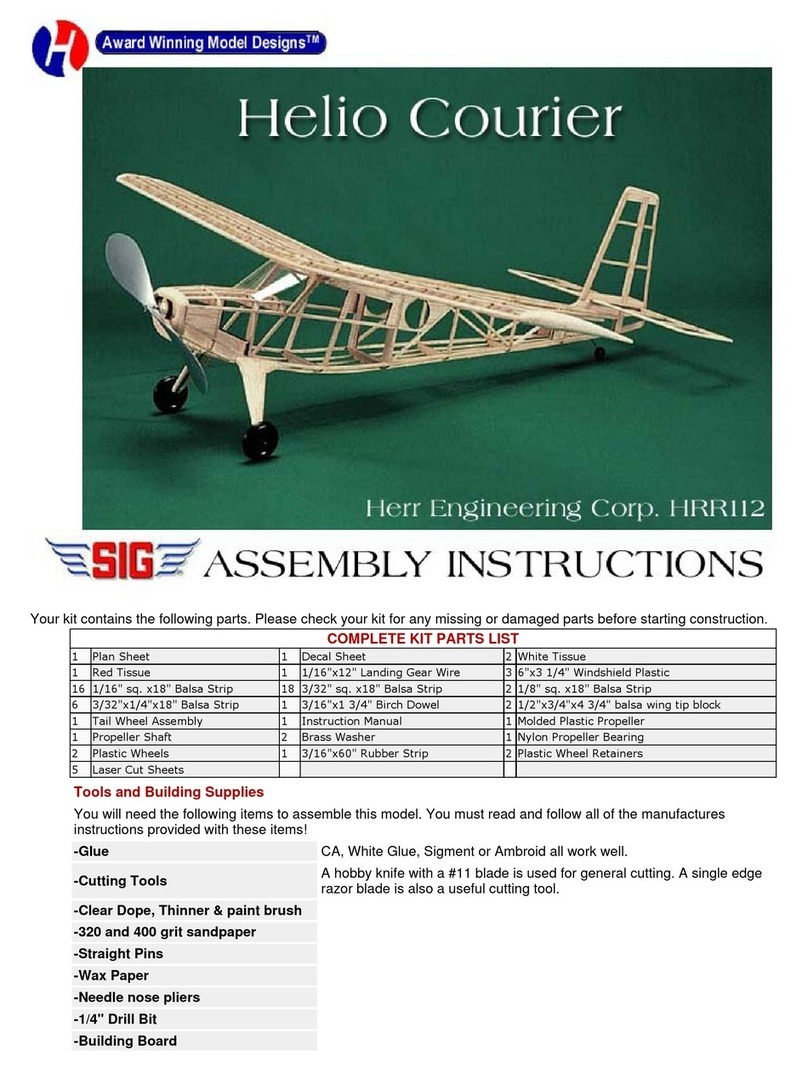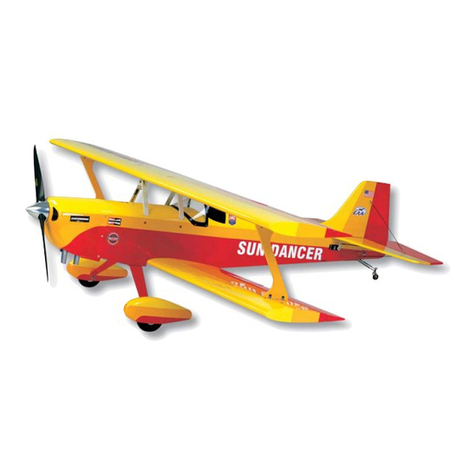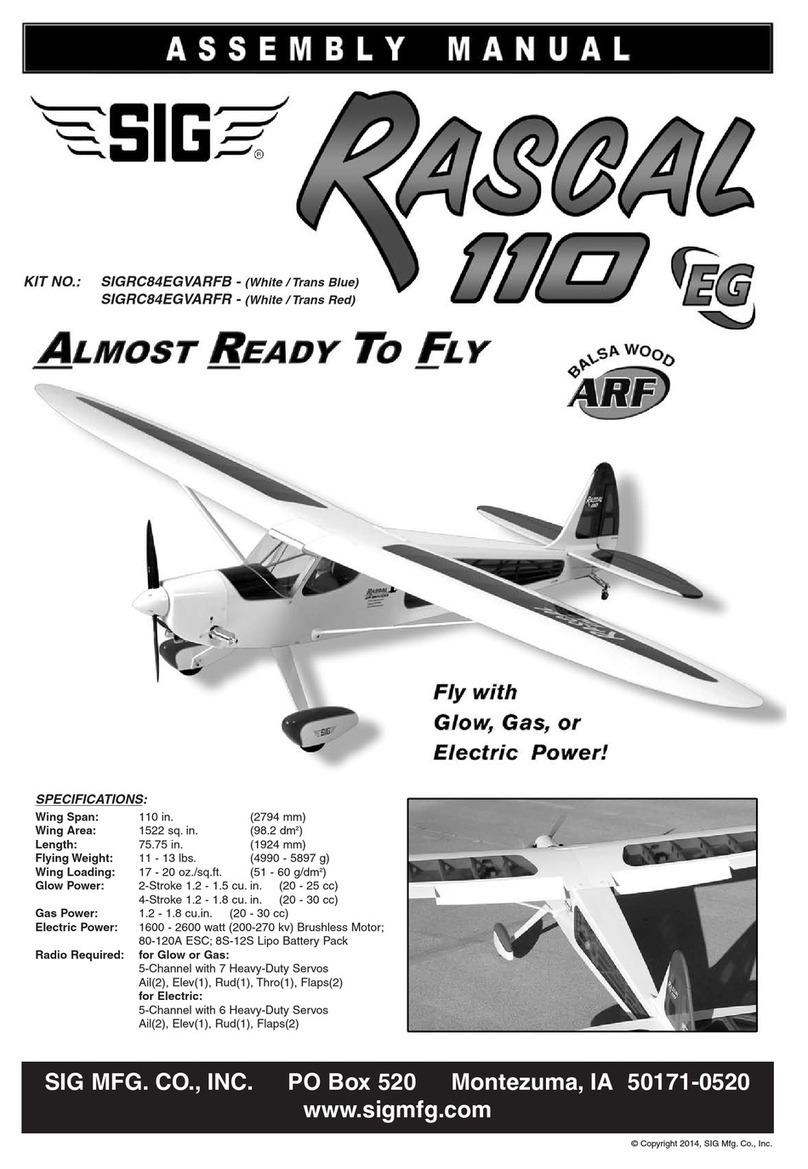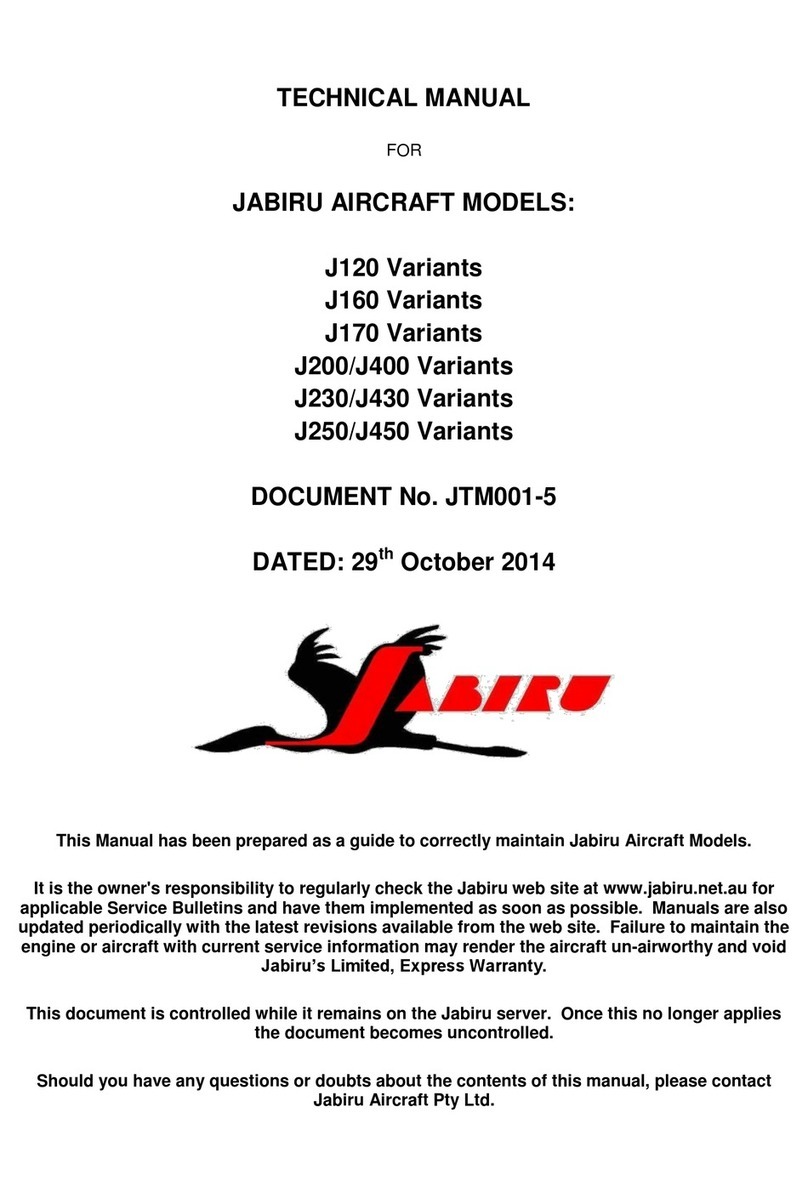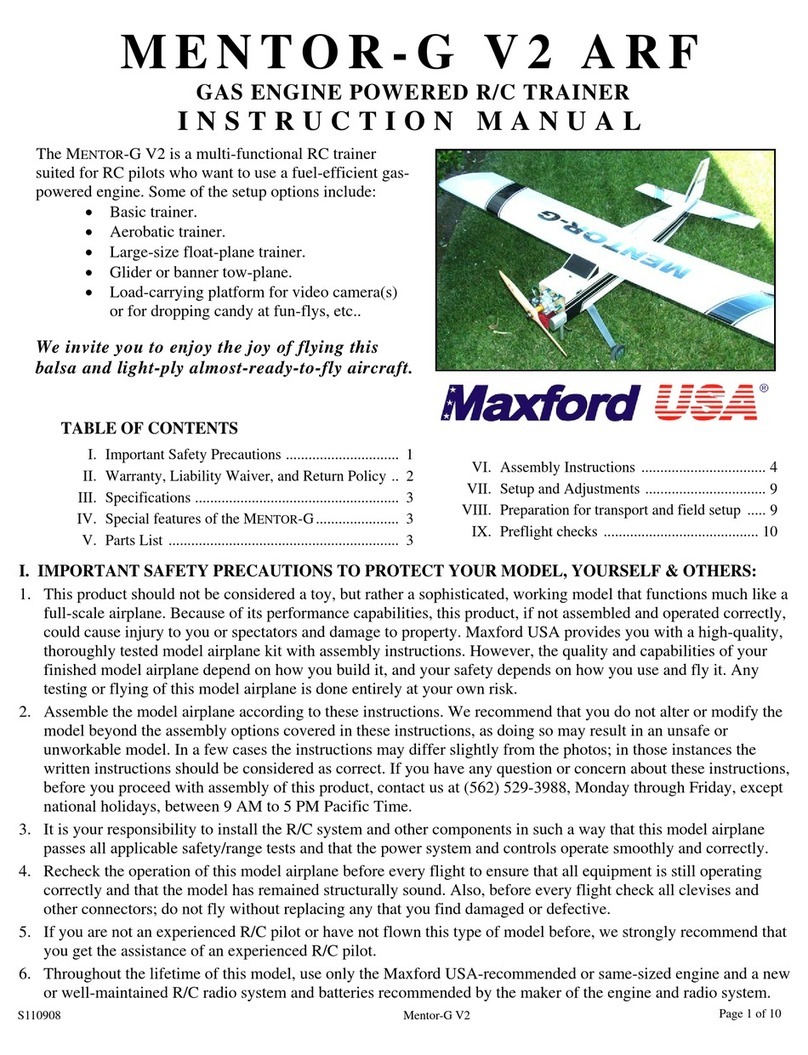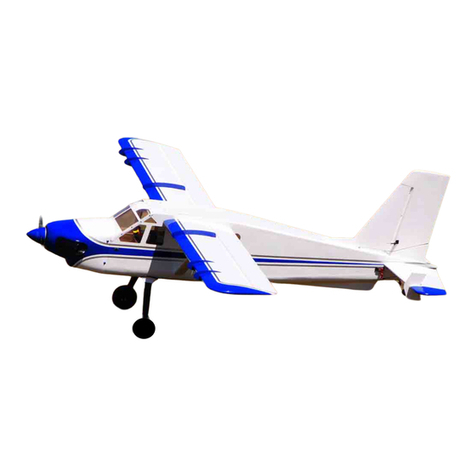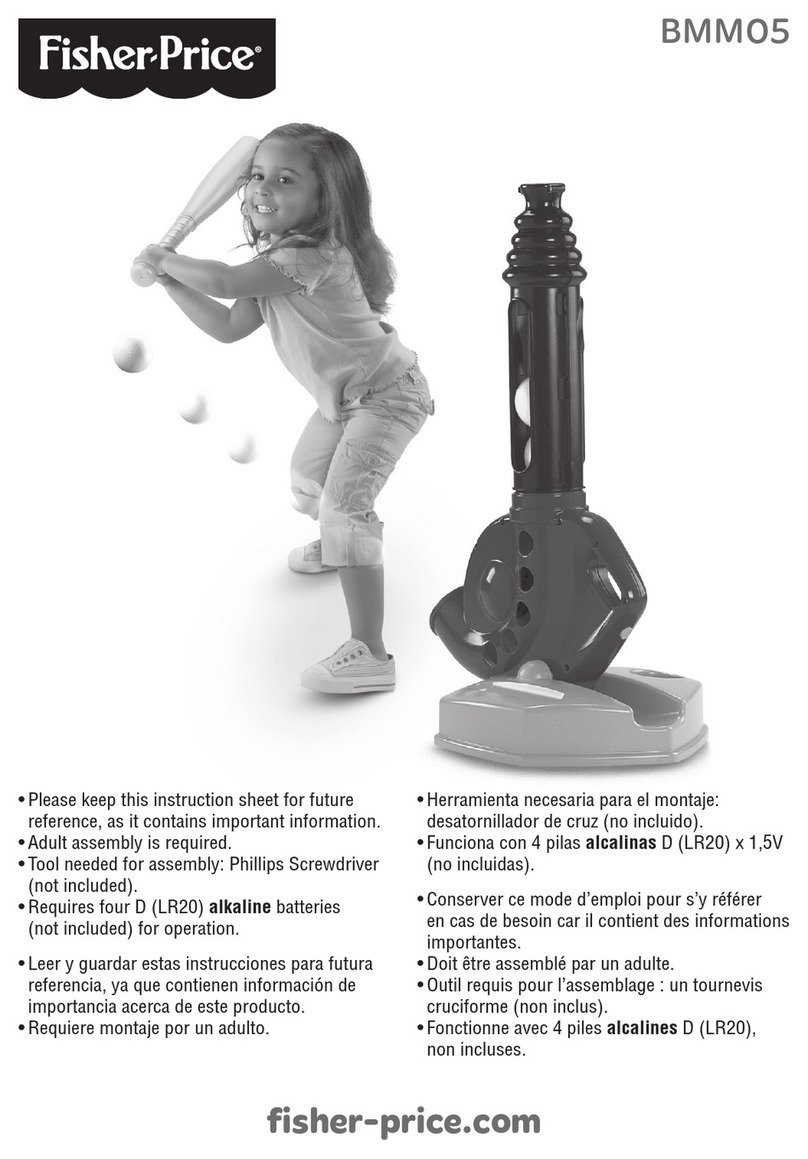RASCAL 110 ARF ASSEMBLY MANUAL
INTRODUCTION:
SIG's RASCAL 110 ARF represents one of the largest, best built
R/C model aircraft ever offered to modelers. The distinctive and
classic lines of the Rascal are reminiscent of the beautiful personal
aircraft designs of the thirties and post WWII periods. The elegant
good looks of the Rascal design seem to bridge the gap between
modern small aircraft and airplanes from the golden age of flight.
Designed specifically for modelers who have always wanted a
large, giant-scale airplane without all of the large airplane hassles,
the Rascal 110 ARF kit offers a perfect balance of size,
performance, looks, and versatility. From experience, we can tell
you that the Rascal 110 ARF will almost always draw a crowd of
admiring onlookers. But when the airplane takes to the air, the
smooth flight characteristics and sheer size make it even more
impressive.
You will have never flown an easier to handle airplane than the
Rascal 110 ARF. Take-offs and landings are spectacular in their
smoothness and when it comes to what goes on in the air, the
Rascal 110 is positively elegant. Despite it’s large size, the Rascal
110 can be easily flown at most typical R/C flying sites, either
grass or asphalt fields. Landings can be very slow and predictable
and the take-off runs are usually less than many .40-size trainers.
Powered with typical 1.20 4-stroke engines, the Rascal 110 is
capable of mild aerobatics, such as loops, lazy rolls, inverted flight,
etc. Power the airplane with larger engines and things can get a
bit more interesting. Our Rascal 110 models, powered with 1.50
or 1.80 4-stroke engines and 1.50 2-stroke engines, turned into
very capable aerobatic airplanes! Of course, the Rascal 110 ARF
is not a pure aerobatic machine and was never intended for IMAC
competition. None-the-less, with practice, it will deliver an
amazingly nice flight routine.
The Rascal 110 ARF is very well built, with attention paid to every
detail of its construction and finish. Even the functional aluminum
wing struts have been expertly built and factory painted, providing
just the right "look" to the model. The fiberglass cowl and wheel
pants are equally impressive, giving the airplane that "finished"
look, truly setting it apart from anything else available. The
airframe has been expertly covered with AeroKote™, employing a
trim scheme that is highly visible in flight and very attractive on the
ground. The kit includes all of the detailed decals seen on the box
art, allowing you to make the model very realistic. SIG has even
included a beautiful scale-like tailwheel assembly that fits the look
of this airplane almost perfectly!
Because of its size and lifting ability, the Rascal 110 ARF is a great
choice for use as a camera ship, either still or video. Properly
powered, it would also make a good glider tug and is also certainly
capable of towing banners. Properly modified, it could also be
used to drop candy or parachutes. Another potential use for this
versatile model is night flying. Because the trim scheme employs
the use of transparent covering material in the open areas of the
structure, lighting systems - such as those made and sold by Ram
Products - would be very effective!
Assembly of the Rascal 110 is easy, quick, and straightforward.
This assembly manual is fully illustrated and includes all detailed
instructions in the correct sequence. This allows you to get the
airplane from the box to the flying field in a very short amount of
time. We strongly suggest that you read through this manual first
to get familiar with the various parts and their assembly
sequences. The proper assembly and flying of this aircraft is your
responsibility. If you are new to the sport/hobby of radio control
model airplanes, we urge you to seek the assistance of a qualified
person to help you assemble this R/C model aircraft correctly. If
you do not understand a particular assembly step or sequence,
DO NOT guess - find qualified help and use it.
RADIO EQUIPMENT:
The Rascal 110 ARF requires a 4-channel radio system, with five
servos. Because of its size and the wide variety of engines that
can be used in this airplane, we highly recommend that you use
servos with at least 60 in/ounces of torque. Such servos are more
appropriate for a model of this size.
We use and can highly recommend either the Airtronics™
RD-6000 Sport system or the Hitec™ Flash 4X system for this
airplane. Both of these affordable and reliable computer radio
systems offer all the features you'll need for this and the many
other R/C aircraft in your future. For reference, this assembly
manual shows the installation of Hitec™ #HS-545BB servos for
aileron, rudder, and elevator controls. A Hitec™ #HS-300
standard servo is used for throttle control. We used a Hitec™
#23873 RCD 3800 Supreme Shift Select receiver and a Hitec™
#57215 Standard Switch Harness. We also used one Hitec™
#54606 36" servo extension for the elevator servo and two Hitec™
#57346 24" servo extensions for the aileron servos. A Hitec™
#57350 Y-Harness to connect the aileron servo leads to the
receiver. All of these items are available separately as after-
market equipment at very affordable prices. See your local hobby
shop for more information.
We like to use Du-Bro after-market servo output arms. These are
exceptionally strong and always seem to be the right shape and
geometry for most of our applications. Du-Bro makes their output
arms to fit any available servos, just use the right part number for
your particular brand of servos. Because our assembly manual
model is using Hitec™ servos, we chose the Du-Bro #675 set.
With an R/C model as large as the Rascal 110 - especially when
using five servos - we always suggest using airborne battery packs
with larger capacity than the typical battery packs supplied with
most radio systems. For example, we used an after-market
1400mAh four-cell battery pack in the model shown in this
assembly manual. Be sure you have a charger capable of properly
charging these larger battery packs.
1





















